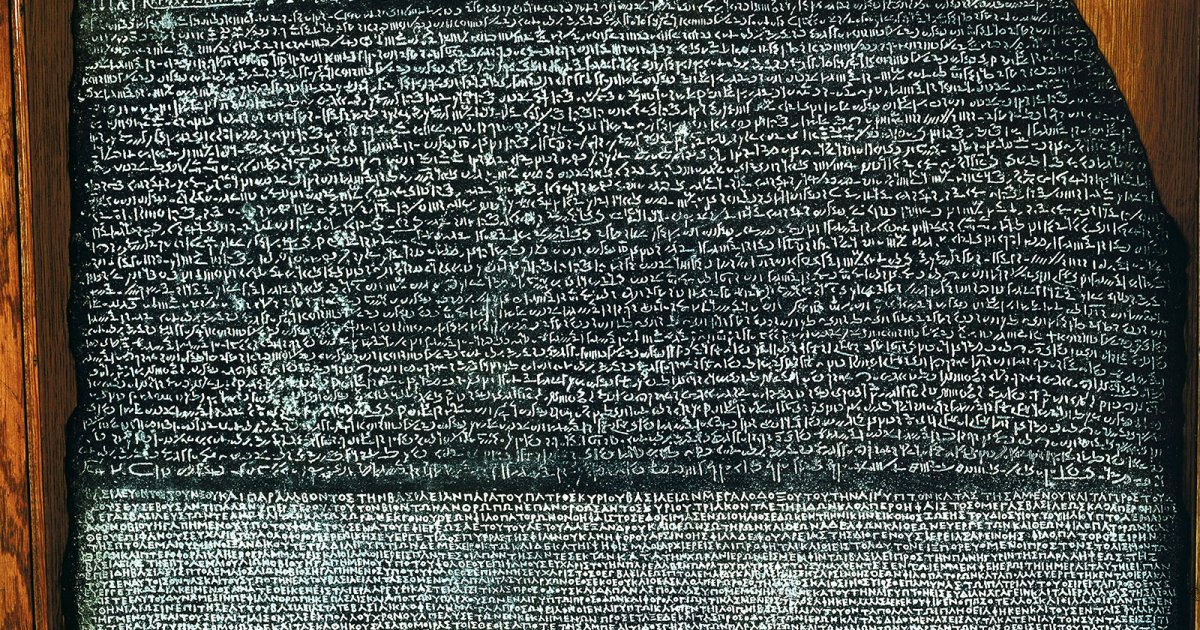BRITISH MUSEUM, Rosetta Stone
 Language: English / USA
Language: English / USA
Now I'd like to tell you about one of the most famous archaeological finds in the world, which is renowned because it made it possible to finally decipher hieroglyphics: the famous Rosetta Stone.
It is a black granite slab about a meter tall with an inscription divided into three columns: the first is in Egyptian hieroglyphic script, the second is in Egyptian "Demotic" script with different handwriting, and the third is in Greek.
The stele was discovered in 1799 by a captain from the Napoleonic army who had disembarked in Egypt, and was named after the city of Rosetta (now Rashid) located on the Nile Delta. The find immediately aroused great interest, as it was clear that the three different inscriptions were the same text. The text is a decree that was issued in 196 BC for the first anniversary of the coronation of the pharaoh Ptolemy V.
Two scholars immediately set out trying to decipher it: the English physicist Thomas Young identified the names of the sovereign and his consort in the three different inscriptions, but it was the French Egyptologist Jean-François Champollion, who was a true linguistic genius, who managed to get to the bottom of the matter thanks to his knowledge of the Coptic language, which is a late form of the Egyptian language.
The work was long and quite difficult because, as you can see, the stele has just a fragment of the text, and not a very long one at that! Only 14 lines of the hieroglyphs remain, the demotic script has a little bit more, and the Greek text at the bottom has 54 rows, of which only the first 27 are complete.
As you admire this mysterious text, keep in mind that it is a celebratory stele. It proclaims that a statue will be erected in honor of the pharaoh Ptolemy V in all the temples of the kingdom to thank him for having reduced taxes and brought many other benefits to the country. In order for the decree to be understood by everyone, it was decided to write it in hieroglyphs (the "language of the gods" that was used for monuments and stately occasions), in Demotic (the language of the people), and in Greek.
FUN FACT: Champollion's greatest discovery was the understanding that each hieroglyph didn't necessarily correspond to a word. Hieroglyphic text didn't simply represent objects or concepts: the same individual signs could have different meanings within the same text: a single letter, an object, or a concept.



